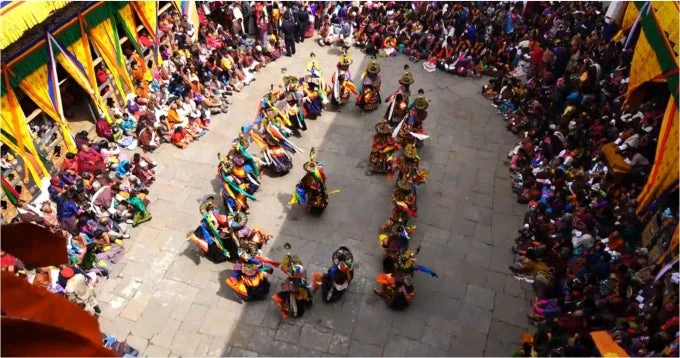
Culture defines the sovereignty and identity of Bhutan and its people.
And the intricate beauty and uniqueness of its traditional architecture are known around the world.
As such, cultural heritage preservation is one of the four pillars of Gross National Happiness, the guiding philosophy of Bhutan’s development, and is embedded in all its national development policies.
In this context, the Royal Government of Bhutan has made it a priority to sustain both tangible and intangible aspects of its culture with dedicated offices under the Department of Culture of Ministry of Home and Cultural Affairs (MOHCA), which work closely with local governments.
This work is critical as Bhutan’s monuments are vulnerable.
The 2009 and 2011 earthquakes damaged hundreds of historic monasteries and fortresses known as dzongs, including the Lhuntse and Trashigang Dzongs (2009) and the Paro Tadzong (2011).
Also, fires triggered some of the worst disasters in Bhutan’s cultural history.
The famous Paro Taktshang, nicknamed the Tiger’s Nest and the Wangduephodrang Dzong were burnt down in 2008 and 2012 respectively.
One of the distinctive characteristics of the Dzongs of Bhutan is their strategic location.

The dzongs sit on hilltops or at the confluence of rivers, to allow residents to watch the valley and guard themselves against threats.
But the salient features of dzongs also increases their vulnerability.
For example, during the Wangduephodrang Dzong fire, its location at the hilltop prevented bystanders from quickly accessing the scene and putting out the flames that slowly burned down the majestic structure.
That said, preserving its cultural assets remains a challenge for Bhutan as the country struggles to reconcile the needs to improve the livelihoods of residents while conserving the authenticity of the traditional buildings where they live .
To overcome this challenge, and building on the outcomes from the Technical Deep Dive on Resilient Cultural Heritage in Tokyo, the Division for Conservation of Heritage Sites (DCHS) and its partners gathered at a workshop last April to develop further guidelines to monitor and prepare for risks, disaster response, and post-disaster recovery for cultural heritage sites.
The event also highlighted the importance of Bhutan’s cultural heritage for its economy.
Central to DCHS’ vision is to involve religious congregations or monks, who act as custodians of the heritage sites, in major renovation projects as well as in discussions on policies and programs.
The DCHS is also closely engaging with international agencies to bring in best practices and technical knowledge, seek support for direct investments and capacity development.
Partners include UNESCO, the International Council on Monuments and Sites (ICOMOS), the International Centre for the Study of the Preservation and Restoration of Cultural Property (ICCROM) and private civil society organizations.
The DCHS with its partners is working at all levels, ranging from inventory and documentation of important heritage sites to hands-on renovation works, research works to improve the understanding of the behavior of traditional buildings, and continued capacity building of artisans and its officials to enhance the resilience of these structures.
All these initiatives aim to preserve the unique cultural legacy that’s part of Bhutan’s national fabric.
Read more: From Japan to Bhutan: Improving the resilience of cultural heritage sites
The Kingdom of Bhutan’s efforts to preserve and protect its cultural heritage are supported by the World Bank and the Global Facility for Disaster Reduction and Recovery (GFDRR) , and through the Japan-World Bank Program for Mainstreaming Disaster Risk Management (DRM).




Join the Conversation